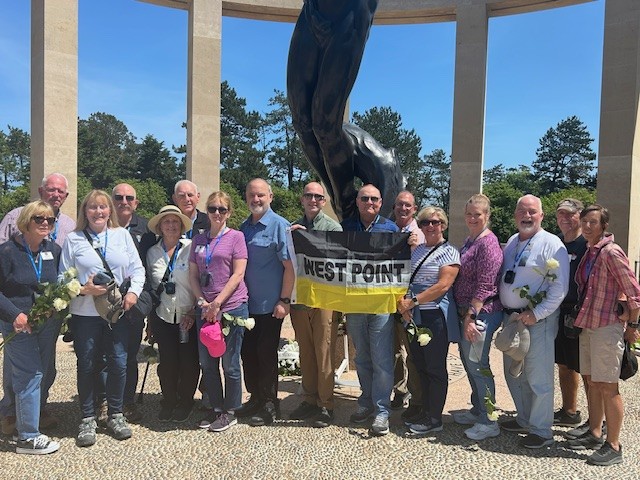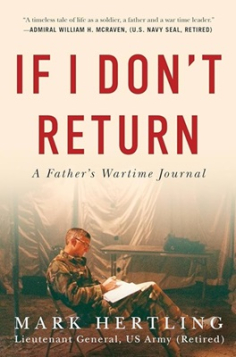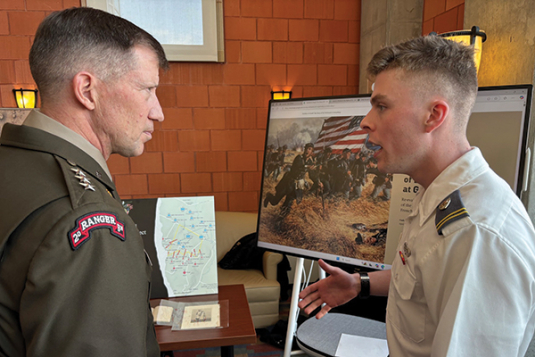By Erika Norton, WPAOG Senior Multimedia Journalist
Through the West Point Association of Graduates, members of the Long Gray Line and their families have the unique opportunity to travel alongside other Old Grads on exclusive tours of historic locations, including the wartime route of the famed “Band of Brothers.”
On the “Easy Company: England to the Eagle’s Nest” trip, Old Grads retrace the steps of “Easy Company” across seven countries, experiencing rare access to crucial battlefield sites that changed the course of history. In collaboration with the National World War II Museum, guides draw upon the Museum’s collection of oral histories, photographs, and artifacts to deliver a memorable, emotional and educational trip of a lifetime.
Chuck Sulewski ’96, WPAOG’s Director of Data and Decision Science, had the privilege of going on this trip in June. According to Sulewski, there was an immediate camaraderie among the West Point Graduates from multiple decades on the trip, which led to incredible lasting memories and friendships.
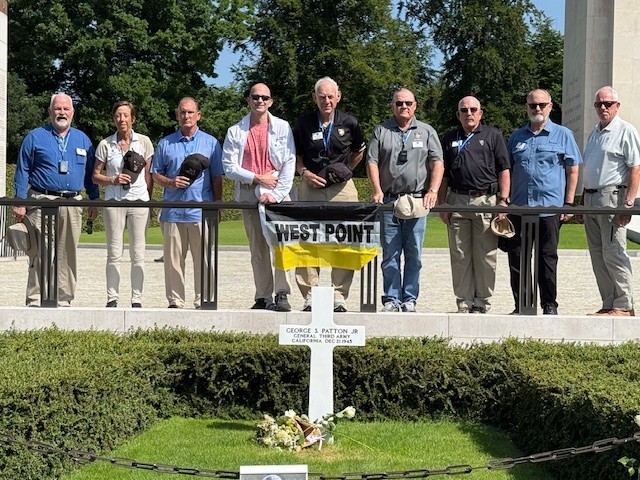
“I loved hearing about their cadet days, their time in the Army, and what they do now,” Sulewski said. “They enjoyed hearing the same from me. Getting to travel with various generations of graduates made me appreciate the shared sense of purpose and pride that connects the Long Gray Line.”
Another highlight of this popular trip is getting to travel in the company of an original cast member from Band of Brothers, the award-winning television mini-series created and produced by Steven Spielberg and 2025 Thayer Award recipient Tom Hanks that brought the story of Easy Company to millions of viewers worldwide. The series is adapted from the 1991 best-selling book of the same title, which features oral histories conducted by historian Stephen Ambrose and founding president of The National WWII Museum, Nick Mueller, during 20 years of tours with D-Day veterans and surviving members of Easy Company.
“Perhaps no single work, in the past three decades, has had such an impact, or made such an imprint on the American memory of World War II,” said Terence Sinkfield ’99, WPAOG’s Vice President of Alumni Support.
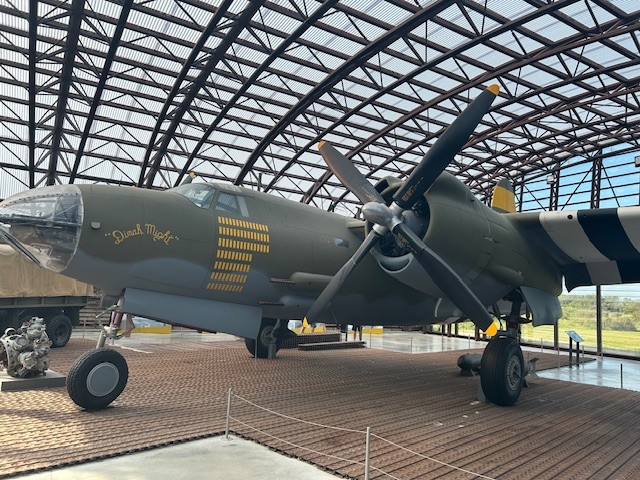


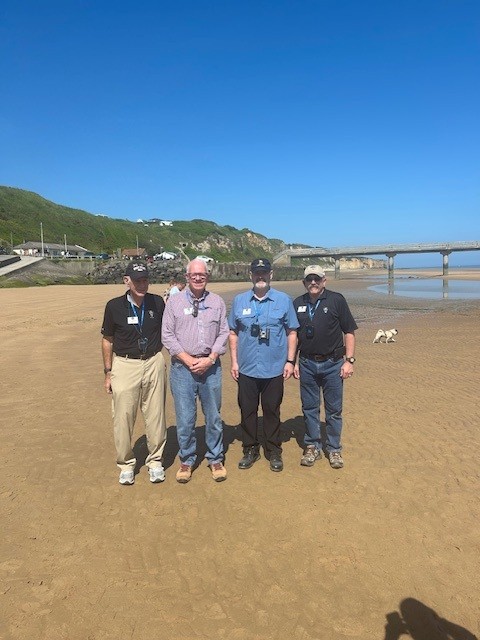
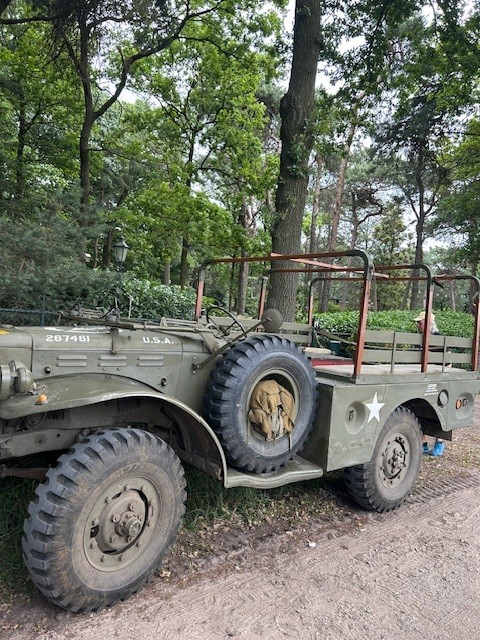
From the Normandy D-Day beaches to the Rhine River, this trip through history was emotional and at times difficult to process, according to Sulewski, and the photos don’t do it justice.
“To travel by a ferry boat across the English Channel and see Normandy appear on the horizon was spectacular,” Sulewski said. “We had air conditioning on the ferry, a five-star meal, and daylight. I can’t imagine traveling under the cover of darkness, being shot at, and storming the beach soaking wet with bodies lying everywhere. I am Airborne qualified with 26 jumps. They were all a ‘Disney ride’ in comparison to the five training jumps and one real combat jump into Normandy our grandparents did.”
During the journey, travelers sat in blood-stained church pews that were used as makeshift hospital beds and surgical tables, stood in the original fox holes dug out in Bastogne during the Battle of the Bulge, and stood in front of buildings and arches where they listened to recordings of speeches given by past leaders at that very location. Travelers also visited hiding spots where Jewish families laid between the ceilings and above floors of hotels.
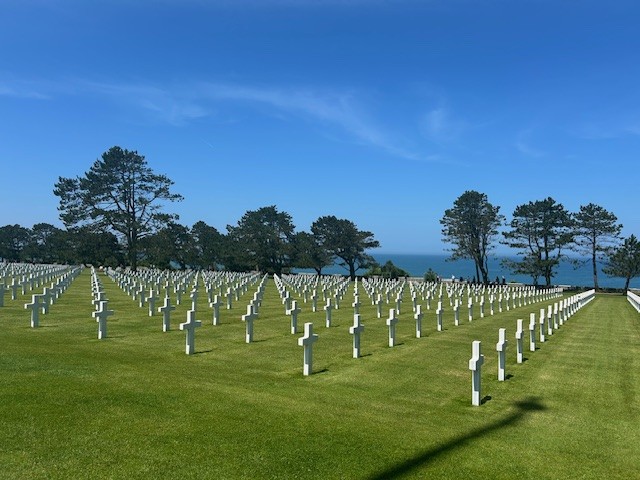
“Walking in front of remaining crematories at the Dachau concentration camp makes your heart hit the floor,” Sulewski said. Dachau was the longest operating concentration camp in the Holocaust the Nazis used in the mass murder of more than six million Jews. At Dachau, at least 40,000 people were killed or died of hunger and illness between 1933 and 1945. The German camp was designed to house 2,000 people, but on liberation day on April 29, 1945, the U.S. Army’s 42nd Infantry Division, 45th Infantry Division, and 20th Armored Division saved more than 30,000 prisoners alive at the camp.
At the American cemeteries, travelers stood before the headstones as they listened to powerful tales of each soldier’s childhood and the brief but brave chapters they lived in service to the U.S. Army. Seeing the 9,600 white crosses in Normandy and the 6,000 white crosses in Luxembourg, along with the missing soldiers’ names on the walls, was unfathomable, according to Sulewski.
“It was truly an unforgettable trip, and I’m so grateful for the opportunity to share it with fellow graduates,” Sulewski said. “It wouldn’t have been the same without them.”

